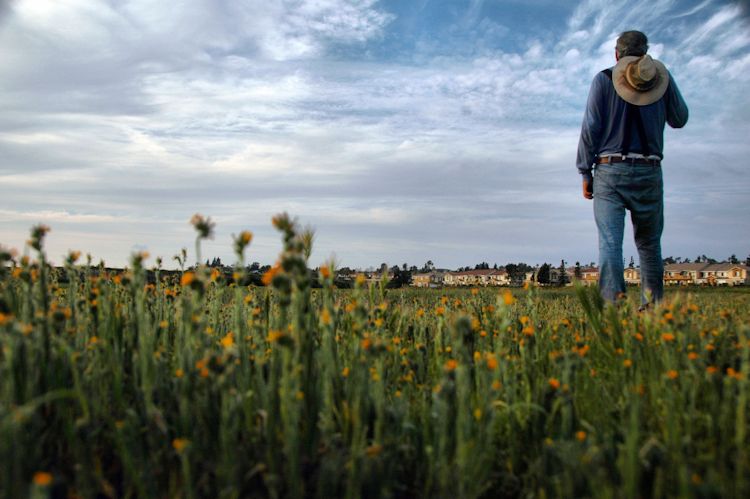Pax Nortona – A Blog by Joel Sax
From the Land of the Lost Blunderbuss
Home - Travel - Vacations - Vacation Fall 2003 - Utah Travel Diary 6
Utah Travel Diary 6
Posted on October 23, 2003 in Vacation Fall 2003
October 9, 2003, Torrey, Utah
A tapping began at dawn and I did not know what it was. Now I look through the gauzy window curtains and see the wind moving the cottonwoods bow and pirouette….Those trees keep bouncing about. They’ve cut down all the useful ones. Just left the cottonwoods, the junipers, and stunted pinyon pines. You can tell that there were straight-timbered trees growing here. Where did they find all the wood for the cabins? Those have been logged and replaced by gnarled gnomes of no use except firewood and interesting postcards. “How my ancestors killed these vallies” Should I be so harsh on them? They’ve left the place in better shape than the developers squatting on preserved land near my home in California. There’s that issue again — the feeling of being stuck between those who declare their acts of civilizing these vallies, of setting boundaries, stringing the fences as evil and those who glorify every deed as the work of God who uses us as a mason wields a trowel to clear, to slap on the cement, to smooth, and to pound the next brick into place.
The tool of God? Or the tool of those who would style themselves as gods?
Outside the door to this room is the admirable work of an eccentric, a six-walled “kiva” with windows and heavy stacked stones. It’s almost the reversal of the civilizing process here. Why did Southey Swede do it? To “bring back the spirit of the Anasazi” as a brochure says? What ghost does he intend to invoke? What is this “spirit of the Anasazi”? Did I see it on the rocks along Capitol Gorge? Where does the Fremont River go? Is the liquid soul of the Anasazi draining out of a slot canyon? If I go to the Gulf of California and suck the juices of a fish, will I imbibe some of the soul of the man who drew the elk on the walls under the overhang?
I can see the points where they pecked the rock. Round holes. Were they calling the game or just doodling? Who drilled the holes? So many questions. Did I enter a chapel or a back alley? The Indians came to these spots. I believe that someday there will come a Christ whose followers will speak the language of the First People like the church fathers spoke Latin. Will the day come when they have a Vatican II?
Later.
Fern’s Nipple, a point on the map. I walked into the Visitor’s Center and asked them flat out “Who was Fern?” They explained that she was the girlfriend of a friend of Butch Cassidy, a peripheral character in the saga of the Hole-in-the-Wall Gang.
Ben the ranger insisted that I was the only person who had ever asked him that question. So I hatched an evil plot. I asked other travelers to go to the Visitor Center and ask about Fern. Went to Sunset Point later on. Photographed the anatomically correct sandstone dome. What was Fern like? I imagined her with greenish blonde hair from all the harsh soap she used as shampoo and pale like the moon that rose over her prone body minutes after sunset.
This is Butch Cassidy, Sundance Kid country. Whether the outlaw ever hid out among the slot canyons or saw the arch that bears his name is uncertain. His photos show a puffy-faced guy with a good boy haircut. He got around and bored a few holes in the area’s women. I turn his photo upside down and imagine a smirking bat dangling from a blind arch in the Navajo sandstone. A bat with a six-gun. Bang bang. You’re dead, Mr. Mormon Lawman. In the meantime, the sensualists from Fruita run up Cohab Canyon with their wives. Old Butch is just bringing us too much in the way of attention here, Mildred and Anne and Elise.
Torrey begins and ends before it meets anything else. The highway runs flat out for two miles, the central portion of which is shaded by ancient cottonwoods. Cottonwoods slurp up a lot of water. Good citizens of Torrey dug a ditch along one side of the road which is always filled with green-black water that sets lazily like that of a southern swamp of a waterpocket in the Reef.
You have log cabins, shotgun houses with false fronts, modest Victorians, brick houses, and houses made from local stone. Just after the official town blinks out to the east, towards the National Park, Torrey boasts a cluster of plastic gas stations, chain motels, restaurants, and a strip mall. I prefer old Torrey to its suburb. Here you have spirited businesses: inns built in the heyday of Route 66, trading posts, a combination coffee shop and bookstore, and the best restaurant south of Provo, Cafe Diablo where they hand the customers bags to hold their tongues after they’ve been burned out of their mouths. That’s only a hundred or so paces away, across from the Kiva where Southy Swede is building may become a shrine, maybe a rock shop, maybe both things. I saw him working there this afternoon. He has an underground chamber accessible by a ladder, skulls and rocks that he hand-selected for the construct while his brother, who was a professional mason, was still alive and able to lay the stones. I saw wiring, a few skulls, and a ramp that sloped into the chamber.
If I meet Swede tomorrow, I intend to shake his hand and tell him that he is a crazy man. “The world needs more madness,” I will say. “You make it a richer place.”
Another reason for liking this inn: they carry the Canyon Country Zephyr, a radical mag that in this issue includes a fanciful meeting between Jesus and George W. Bush. Jesus tells Bush that he won’t buy his war. I wonder if Jim Stiles reads me?
Bedtime
An early rise because tomorrow we are headed for Upper Muley Twist Canyon and the Strike Valley Overlook.
We ascended the mesa behind Chimney Rock today. Not as bad a hike as I had dreaded. I must be becoming acclimatized to the altitude. The trail started in a maroon badland — elegantly round-topped hills. On our way back through these mounds I spotted gypsum crystals, none more than an eighth of an inch thick, resembling broken green safety glass. The trail snaked out of the badland, past white patches of “summer snow” and up a limonite-tinged landslide. The mesa is capped with pale golden sandstone and held up by chocolatey layers of Kayenta shale.
Right at the base of the landslide — which was well smoothed by centuries of infrequent rain — stood a five to seven feet tall stack of Kayenta holding up a crenellated Navajo crown. My eyes scanned the upper mesa and I made out the place where it had fitted. What brought it down? A storm or another disaster?
The whole mesa looks strange. Where you expect to see a flat slickrock top, there’s a pale vertigris hill that rises a few hundred feet more to a pinyon and juniper rampant plateau. It was hard to follow the trail over that mesa — the track over the desert pavement was faint.
From the backside it looked like any other hill, much like the grassy slopes near my home except that it was covered with sagebrush, shadscale, and anemic bunch grasses. The pumpkin colored sandstone fins behind it gave us an eyeful. Fascinating hoodos and rocks racked into melted contortions, chewed intermittently into strangeness by streams and the winds that come out of the steep-sided canyons.

